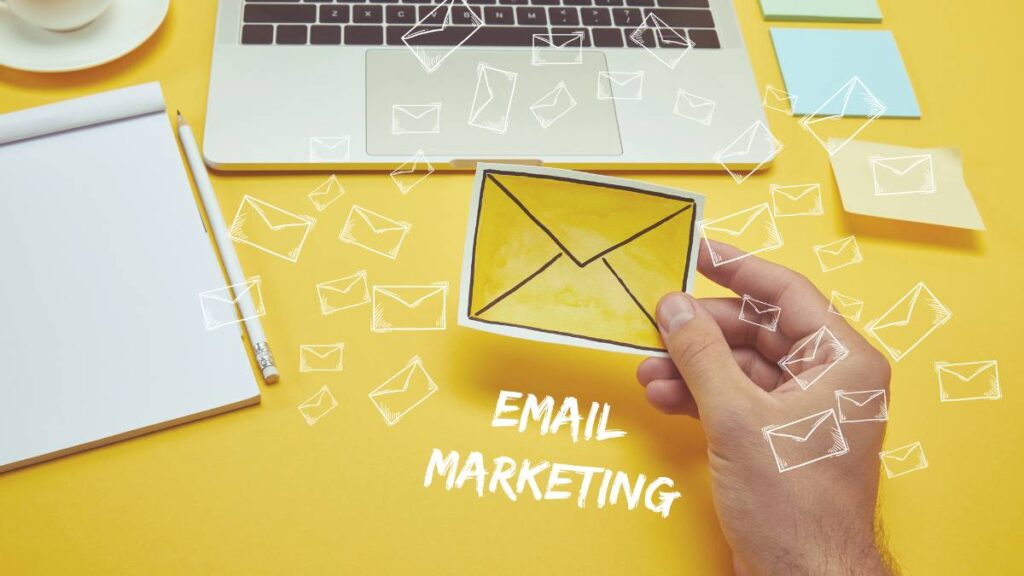Marketers often think of conversion as an end goal—making a sale, booking a demo, or downloading an ebook. However, email marketing plays an integral role in this conversion process by driving multiple micro-conversions that guide customers down the funnel.
High-converting email campaigns rely on customized, targeted messaging that speaks directly to what customers need at each step of their journey.
Here are proven strategies for crafting email campaigns that convert:
1. Make It Personal
Email marketers understand that conversion goes beyond getting readers to click through to a website. It’s about building trust, providing value, and leading readers toward taking the desired action.
Why Personalization Works: Personalization helps customers feel valued and understood. When an email feels individualized, it becomes more memorable, significantly boosting conversion rates.
How to Personalize Effectively:
- Use Customer Data: Leverage customer data such as browsing behavior, purchase history, and demographic information to create tailored content. For example, send product recommendations based on recently viewed items or follow-up emails for abandoned carts.
- Dynamic Content: Use dynamic content blocks in your emails to tailor messages for different audience segments. For instance, if you’re a retailer, showcase seasonal products relevant to the recipient’s location.
- Include Names: Adding a recipient’s name in the subject line or greeting immediately creates a personal connection. E.g., “Hi John, your next favorite book is waiting!”
Examples:
- A travel company might send a personalized email: “John, discover tropical destinations perfect for your next vacation!”
- A SaaS business could follow up with: “Hi Sarah, here’s how [Tool Name] can solve your team’s biggest challenge.”
Tools to Use: Platforms like Mailchimp, ActiveCampaign, or HubSpot make personalization seamless through segmentation and email automation.
2. Make It Relevant
Relevance is critical to increasing open rates, engagement, and ultimately conversions. Customers are more likely to act on emails that resonate with their current needs.
Tips for Creating Relevant Content:
- Segment Your List: Divide your audience into segments based on behavior, demographics, and purchase history. For example:
- Frequent shoppers receive loyalty program updates.
- Cart abandoners receive reminders with discount codes.
- Time Your Emails: Send emails at optimal times. Research indicates emails sent on Tuesday and Thursday mornings often achieve higher open rates.
- Add Urgency: Create urgency by emphasizing limited-time offers or exclusive deals. Phrases like “Offer ends tonight” or “Only 3 spots left” encourage immediate action.
Example: A fitness brand could send: “Ready to transform your workouts? Claim your free trial—offer expires at midnight!”
Include Proof: Use testimonials, ratings, or case studies to build credibility. For example, include a quote from a satisfied customer: “Thanks to [Product], I’ve doubled my productivity!”
3. Make It Actionable
Every successful email campaign has a clear and compelling call-to-action (CTA). The CTA is the bridge between your email content and the action you want readers to take.
Best Practices for CTAs:
- Be Clear and Direct: Avoid vague phrases. Instead, use actionable language like “Shop Now,” “Download Your Guide,” or “Claim Your Discount.”
- Use Scarcity: Highlight limited-time offers with CTAs like “Hurry, Only 2 Hours Left!” to drive urgency.
- Make It Visually Appealing: Use buttons that stand out from the rest of the email. For example, a bold, brightly colored CTA button with text like “Start Your Free Trial” can attract attention.
Examples by Industry:
- E-commerce: “Grab Your 20% Discount Before It’s Gone!”
- Education: “Enroll Now in Our Free Email Marketing Course!”
- Tech: “Get Your Free Demo Today!”
Avoid Pitfalls: Ensure the CTA leads to a landing page that matches the offer. A mismatch can frustrate users and lead to drop-offs.
4. Make It Memorable
With countless emails flooding inboxes daily, standing out requires creativity and visual appeal.
Tips for Memorable Emails:
- Use Visuals: Incorporate images, videos, and GIFs to make your emails more engaging. Studies show that visual content can increase click-through rates by up to 42%.
- Tell a Story: Share relatable stories about your brand or product. For instance, a clothing retailer might share how their sustainable practices impact the environment.
- Interactive Elements: Include interactive features like countdown timers, quizzes, or clickable surveys to engage readers. For example:
- A timer counting down to a sale’s end.
- A quiz to help customers find their perfect product.
Mobile Optimization: Ensure your email design works well on all devices, particularly mobile. Over 50% of emails are opened on mobile, so responsive design is non-negotiable.
5. Tools and Automation to Enhance Campaigns
Email marketing tools can simplify campaign creation and management while improving results. Here are some platforms to consider:
- Mailchimp: Great for beginners, offering templates and automation features.
- ActiveCampaign: Advanced automation and segmentation options.
- Klaviyo: Ideal for e-commerce brands, with excellent personalization features.
How to Use Automation:
- Set up workflows for:
- Welcome emails triggered by new sign-ups.
- Cart abandonment reminders.
- Re-engagement emails for inactive subscribers.
- Use behavior-triggered emails. For example, if a user browses specific products but doesn’t purchase, send a targeted follow-up.
6. Measure and Optimize Performance
Track your email campaigns’ performance using key metrics:
- Open Rates: Indicates subject line effectiveness.
- Click-Through Rates (CTR): Shows how engaging your content and CTAs are.
- Conversion Rates: Measures how many recipients completed the desired action.
Testing:
- A/B test subject lines, CTAs, and visuals to determine what resonates most with your audience.
- Analyze email performance and adjust your strategy accordingly.
By applying these strategies, you’ll not only create email campaigns that convert but also deliver real value to your audience. Remember, the key to success is understanding your audience, personalizing your message, and providing clear, actionable steps.


